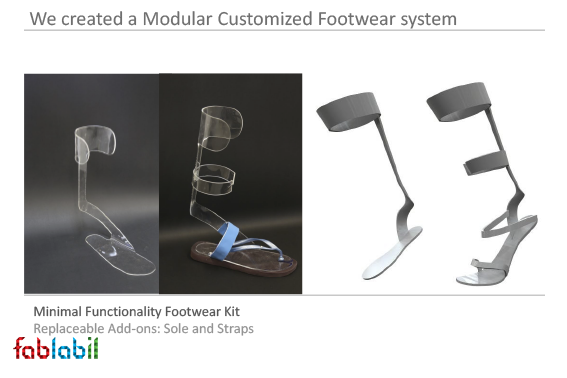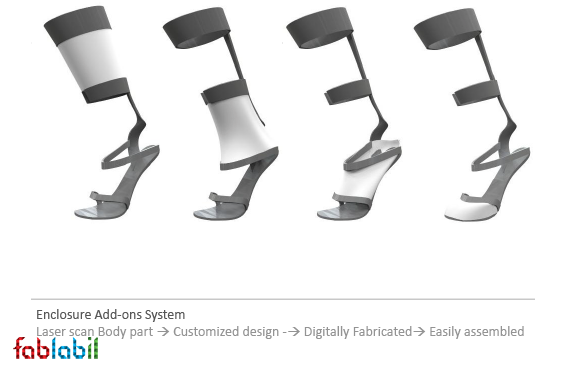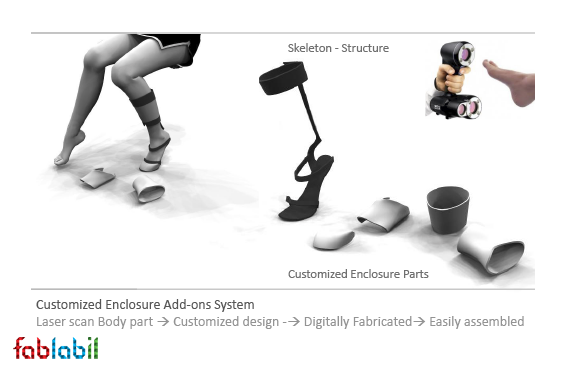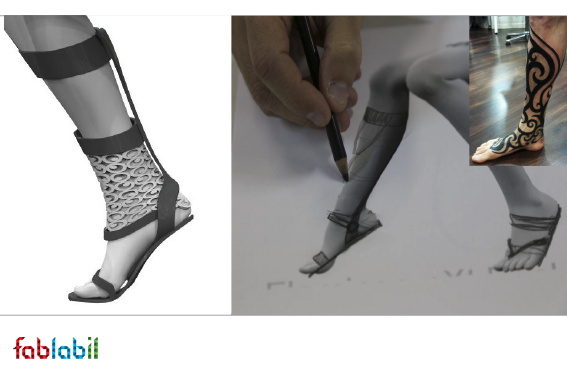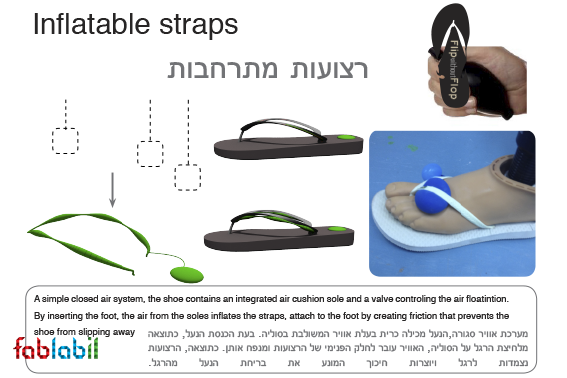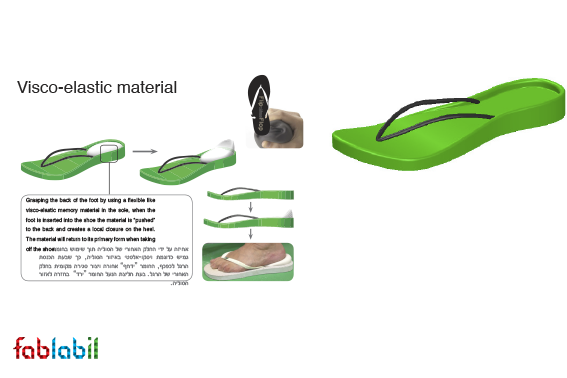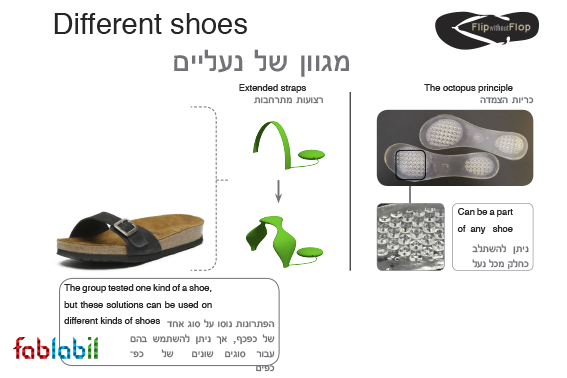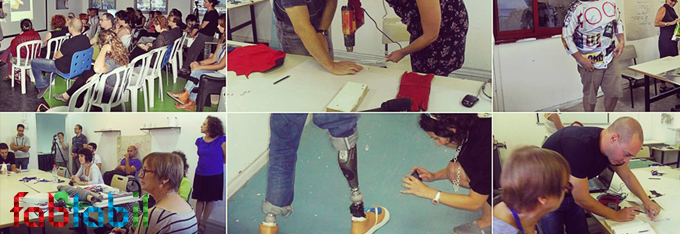
The Extended Body The great technological leaps forward in assistive device design have taken place within an engineering rather than a mainstream design context and don’t often address the aesthetic aspirations of the user. The design brief for this workshop centred on two related aspects of the workshop theme – functional extensions of the body and intimate extensions. A functional extension can be defined as an external assistive aid such as a stairlift or ramp. An intimate extension is an assistive device such as a hearing aid, orthosis or prosthetic that is integral to its wearer’s body image. The four multi-disciplinary teams of architects, designers, engineers, physiotherapists and OTs of the Department of Interior Design of COMAS worked with design partners who had assistive devices were of these two kinds. The challenge resulted in some innovative solutions, particularly in the area of intimate extensions by Teams A and B. These were prototyped and visualised using COMAS’ prototyping facilities. The teams, who were led by four faculty members (all architects from FabLab Israel), were asked to address key questions: How can the essential devices used by your design partner be made discreet, alleviate negative body image and contribute to self-esteem? How can essential products of daily living be transformed into ones that work across differenct scenarios, contexts and accommodate a decline or loss of ability? How can pleasure be brought to the use of these products or devices so they become objects of desire? How can design help to mitigate loss of function, personal identity and relationships that are part of the disability? How can the potential of smart materials and integrated technology be harnessed and 3D printing be part of the process?
The Extended Body - RCA,Helen Hamlyn Centre for Design website

